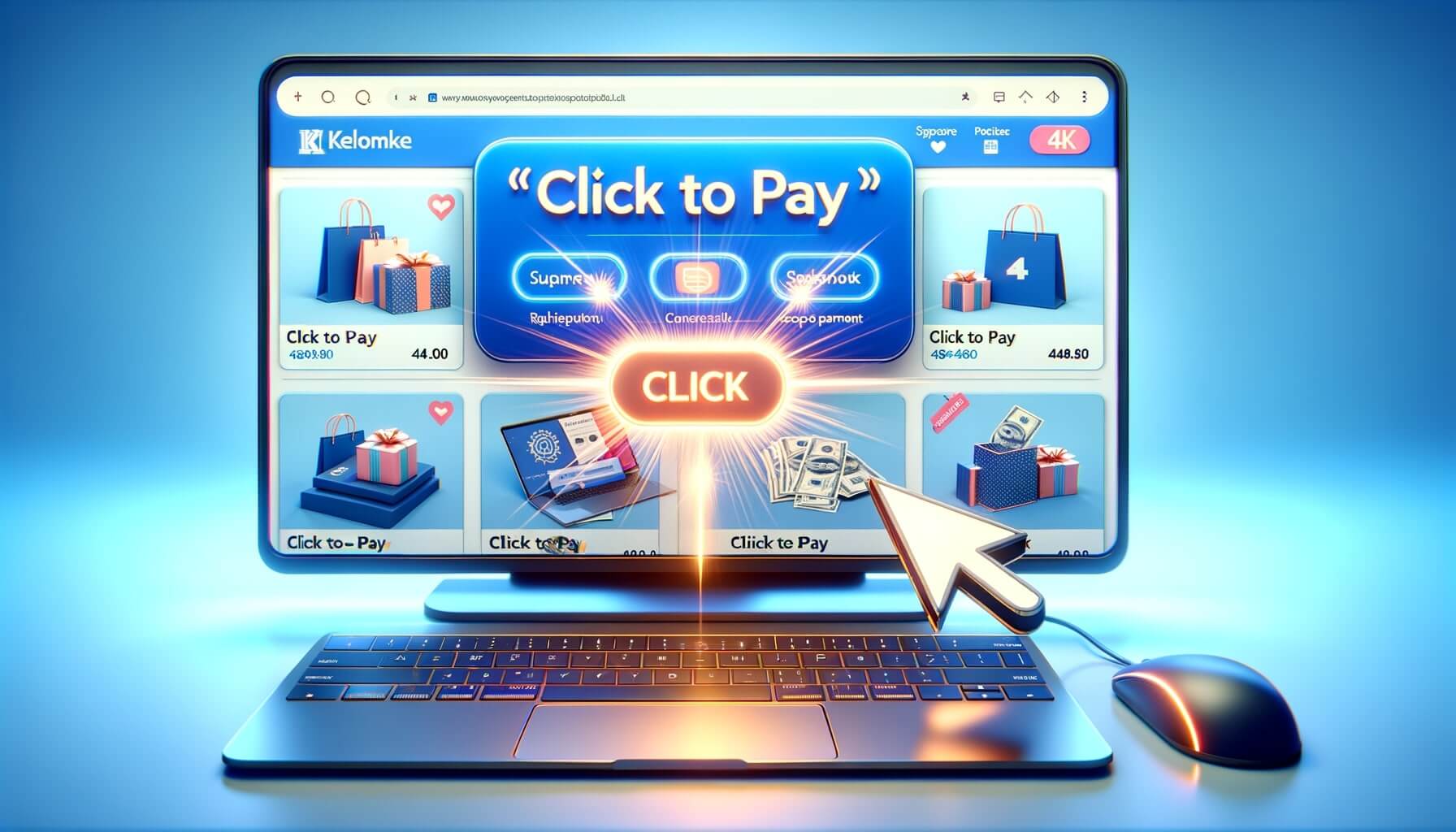
By Ava Owen March 20, 2025
In today’s digital age, online shopping has become increasingly popular, with consumers seeking convenience and efficiency in their purchasing experiences. However, with the rise in online transactions, concerns about security and privacy have also grown.
To address these concerns, various online payment solutions have emerged, one of which is Click to Pay. Click to Pay is a convenient and secure online payment solution that aims to simplify the checkout process for consumers while ensuring the safety of their personal and financial information.
How Does Click to Pay Work? Exploring the Technical Process

Click to Pay utilizes a tokenization system to securely store and transmit payment information. When a consumer chooses to use Click-to-Pay for an online purchase, they are prompted to enter their payment details, such as credit card information, billing address, and contact information, into a secure platform. This information is then encrypted and stored in a secure token vault, which replaces the sensitive data with a unique token.
When the consumer makes subsequent purchases using Click to Pay, they no longer need to enter their payment information manually. Instead, they can simply click on the Click-to-Pay button, which triggers a request to the token vault. The token vault then retrieves the necessary payment information and securely transmits it to the merchant, allowing for a seamless and efficient checkout process.
Understanding the Benefits of Click to Pay for Consumers

Click to Pay offers several benefits for consumers, making it an attractive option for online shoppers. Firstly, it eliminates the need to repeatedly enter payment information for each transaction, saving time and effort. This convenience is particularly valuable for frequent online shoppers who make multiple purchases across different platforms.
Additionally, Click to Pay enhances security by reducing the risk of exposing sensitive payment information. Since the actual payment details are stored securely in the token vault, consumers are not required to share their credit card information directly with merchants. This significantly reduces the chances of data breaches and fraudulent activities, providing consumers with peace of mind when making online purchases.
Furthermore, Click-to-Pay offers a consistent and streamlined checkout experience across different merchants and platforms. Consumers can use Click-to-Pay with any participating merchant, regardless of whether they have previously shopped with them. This eliminates the need to create multiple accounts or remember various login credentials, simplifying the online shopping experience.
The Advantages of Click to Pay for Merchants and Businesses

Click to Pay also offers numerous advantages for merchants and businesses. Firstly, it helps to increase conversion rates by reducing friction during the checkout process. With Click-to-Pay, consumers can complete their purchases quickly and easily, without the need to manually enter payment information. This streamlined process minimizes cart abandonment rates and encourages customers to complete their transactions.
Moreover, Click to Pay provides merchants with access to a wider customer base. Since Click-to-Pay is supported by multiple card networks and payment providers, merchants can cater to a broader range of customers who prefer using this payment method. This inclusivity can lead to increased sales and revenue for businesses.
Additionally, Click to Pay offers enhanced security measures for merchants. By utilizing tokenization, merchants are not exposed to sensitive payment information, reducing their liability in the event of a data breach. This can help businesses build trust with their customers and protect their reputation.
Setting Up Click to Pay: Step-by-Step Guide for Consumers

Setting up Click to Pay is a straightforward process for consumers. Here is a step-by-step guide to help you get started:
1. Check if your card is eligible: Not all cards are currently supported by Click-to-Pay. Visit the Click to Pay website or contact your card issuer to determine if your card is eligible for enrollment.
2. Enroll your card: If your card is eligible, you can enroll it in Click-to-Pay. This can typically be done through your card issuer’s website or mobile app. Follow the instructions provided to complete the enrollment process.
3. Create a Click to Pay account: Once your card is enrolled, you may need to create a Click-to-Pay account. This account will allow you to manage your payment preferences and view your transaction history. Follow the prompts to set up your account.
4. Set your preferences: Within your Click-to-Pay account, you can customize your payment preferences, such as selecting a default card or enabling biometric authentication for added security. Take the time to review and adjust these settings according to your preferences.
5. Start using Click to Pay: With your card enrolled and preferences set, you are now ready to start using Click to Pay. Look for the Click-to-Pay button at participating merchants’ checkout pages and click on it to complete your purchase.
Integrating Click to Pay: Implementation Guide for Merchants
For merchants and businesses looking to integrate Click-to-Pay into their online platforms, here is an implementation guide to help you get started:
1. Determine compatibility: Ensure that your payment gateway or e-commerce platform supports Click-to-Pay. Contact your payment service provider or consult their documentation to confirm compatibility.
2. Enable Click to Pay: Once compatibility is confirmed, enable Click-to-Pay within your payment gateway or e-commerce platform. This may involve installing a plugin or updating your existing integration.
3. Test the integration: Before making Click-to-Pay available to your customers, thoroughly test the integration to ensure a seamless and error-free experience. Conduct test transactions using different cards and scenarios to identify and resolve any issues.
4. Communicate with customers: Once the integration is successfully tested, inform your customers about the availability of Click to Pay as a payment option. Update your website, marketing materials, and checkout pages to promote Click-to-Pay and educate customers on its benefits.
5. Monitor and optimize: Continuously monitor the performance of Click-to-Pay, including conversion rates and customer feedback. Use this data to optimize the checkout process and address any issues that may arise.
Click to Pay vs. Traditional Online Payment Methods: A Comparison
When comparing Click-to-Pay with traditional online payment methods, several key differences and advantages become apparent. Traditional online payment methods typically require consumers to manually enter their payment information for each transaction. This can be time-consuming and cumbersome, especially for frequent online shoppers. In contrast, Click to Pay eliminates the need for manual entry, allowing consumers to complete their purchases with a single click.
Furthermore, traditional online payment methods often require consumers to create accounts or provide additional personal information, such as usernames and passwords. This can lead to account fatigue and security concerns, as consumers may struggle to remember multiple login credentials. Click-to-Pay offers a consistent and streamlined checkout experience across different merchants, eliminating the need for multiple accounts and reducing the risk of password-related security breaches.
From a security standpoint, traditional online payment methods may expose consumers to a higher risk of data breaches and fraudulent activities. With each transaction, consumers are required to share their payment information directly with the merchant, increasing the chances of unauthorized access. Click-to-Pay, on the other hand, utilizes tokenization to securely store and transmit payment information, significantly reducing the risk of data breaches and fraudulent activities.
Frequently Asked Questions (FAQs)
Q1. Is Click to Pay available globally?
Answer: Yes, Click-to-Pay is available globally, with support from various card networks and payment providers. However, availability may vary depending on the region and the card issuer.
Q2. Can I use Click to Pay with multiple cards?
Answer: Yes, Click to Pay allows you to enroll and use multiple cards. You can select a default card within your Click-to-Pay account or choose a specific card during the checkout process.
Q3. Is Click to Pay compatible with mobile devices?
Answer: Yes, Click to Pay is compatible with mobile devices. Many card issuers and payment providers offer mobile apps that allow you to enroll and manage your cards for Click-to-Pay.
Q4. Can I still earn rewards or loyalty points when using Click to Pay?
Answer: Yes, in most cases, you can still earn rewards or loyalty points when using Click-to-Pay. However, it is recommended to check with your card issuer or loyalty program provider for specific details.
Q5. Is Click to Pay secure?
Answer: Yes, Click to Pay is designed with security in mind. By utilizing tokenization, Click to Pay ensures that your payment information is securely stored and transmitted, reducing the risk of data breaches and fraudulent activities.
Conclusion
Click to Pay is a convenient and secure online payment solution that simplifies the checkout process for consumers while ensuring the safety of their personal and financial information. By utilizing tokenization, Click-to-Pay securely stores and transmits payment information, reducing the risk of data breaches and fraudulent activities.
For consumers, Click to Pay offers convenience, enhanced security, and a consistent checkout experience across different merchants. Merchants and businesses benefit from increased conversion rates, access to a wider customer base, and enhanced security measures.
By following the step-by-step guide, consumers can easily set up Click to Pay, while merchants can integrate it into their online platforms using the implementation guide. When compared to traditional online payment methods, Click-to-Pay offers significant advantages in terms of convenience and security. Overall, Click to Pay is a valuable tool for both consumers and businesses in the ever-evolving world of online payments.